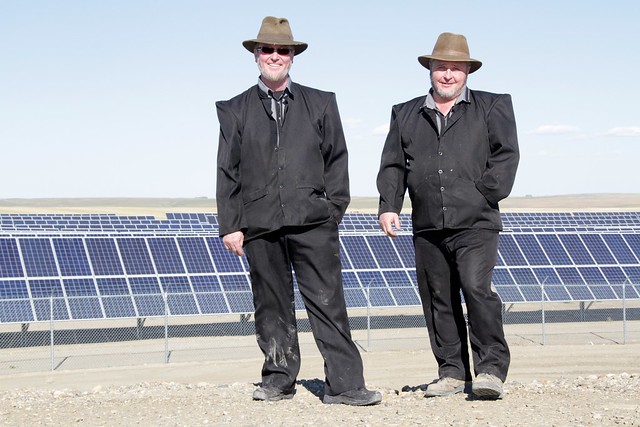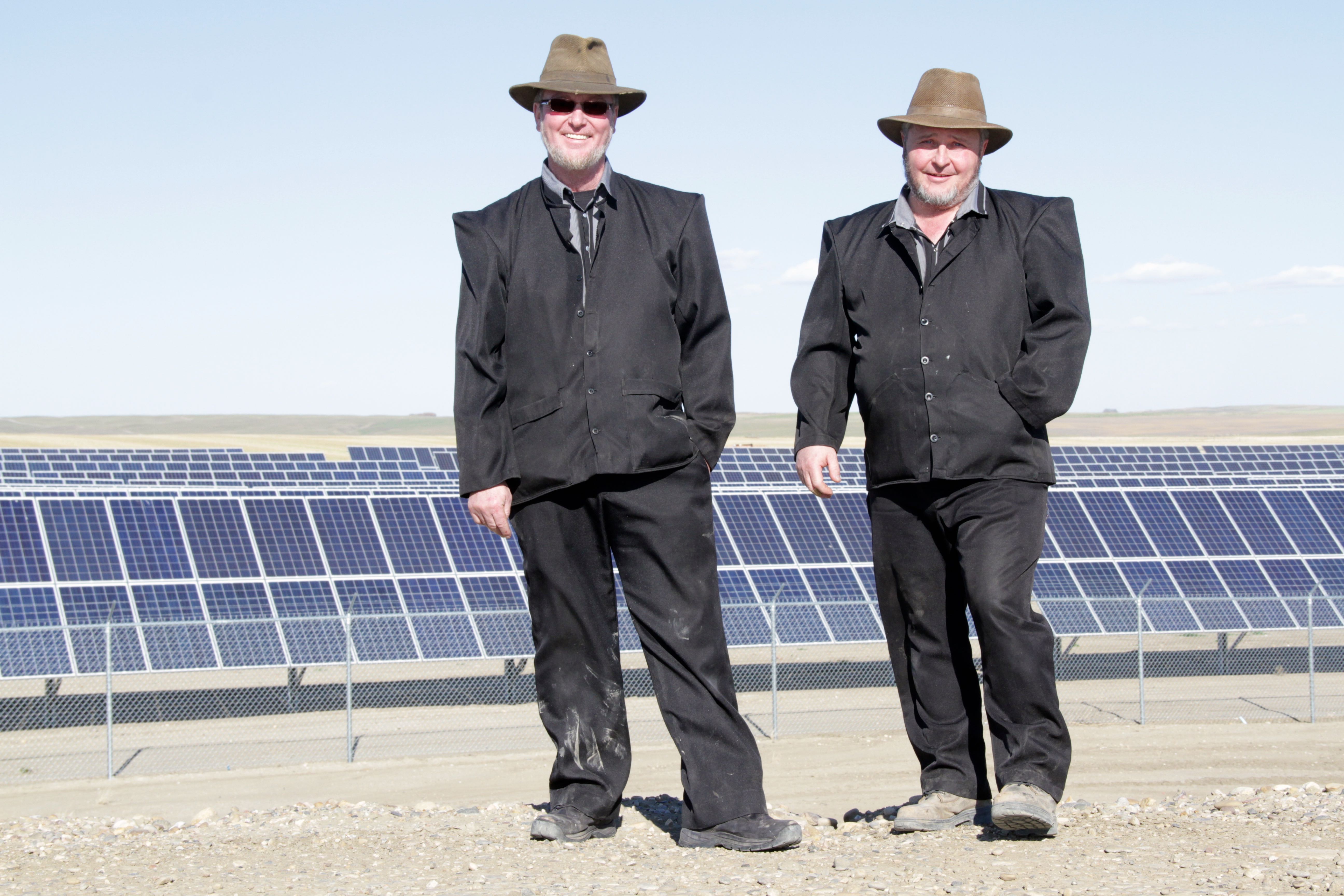By David Dodge & Dylan Thompson
You’ve seen them before, though they don’t tend to stand out. Hutterites—women in bright coloured, identical dresses and men in somber, dark jackets and hats. They’re almost always at the farmer’s market on a Saturday morning selling fresh eggs, carrots and potatoes.
This quaint image of a quiet people is a stereotype many of us know, so it was with curiosity and anticipation that I made my way down the highway to southeastern Alberta to visit the largest solar farm in Western Canada at the Green Acres Hutterite colony.
The Hutterites are ambitious, industrial-scale farmers. The Green Acres colony farms 20,000 acres, runs a hog and chicken operation and operates Crowfoot Plastics, a one-of-a-kind plastics recycling plant just outside Bassano, Alberta.
The brothers Hofer
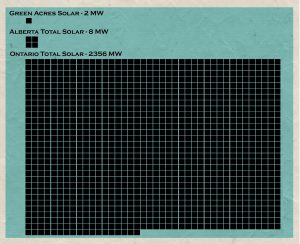
Green Acres 2 MW of solar represents 25 per cent of the 8 MW of solar in Alberta. However this is still very small compared to the more than 2,000 MW in Ontario. Graphic Dylan Thompson
When I arrived, Dan Hofer, the “financial boss” of Green Acres, and his brother, Jake Hofer, Green Acres’ electrician, greeted me. With them was David Vonesch, Chief Operating Officer at SkyFire Energy, the company that installed the colony’s two-megawatt solar system.
The Green Acres colony has a population of about 80 people. Breakfast and dinner are communal while lunch is eaten in the home, which is where I joined Dan Hofer for stew, bread, and a glass of wine.
Afterwards, they took me to see the solar farm up close. It’s quite the sight. More than 7,600 solar modules, row upon row, all facing south. It’s a field of blue that just sits there, quietly harvesting the sun and powering the colony’s future. Thinking on this brings a smile to Jake Hofer’s face.
“It still blows me away to this day,” says Jake Hofer. “Yes, you look at the system, day after day, and there’s nothing moving, no moving parts, and yet it creates all this energy.”
Hutterite culture
Once you understand a bit about Hutterite culture, their embrace of solar power makes perfect sense.
“Every piece of our colony’s livelihood is an asset and is very important,” says Dan Hofer. “You grow and supply your own meat, you grow and supply your own garden and vegetables as much as possible, so [solar power] falls kind of in the same category. It’s self-sufficient. You’re relying on your own resources; you’re not relying on someone else.”
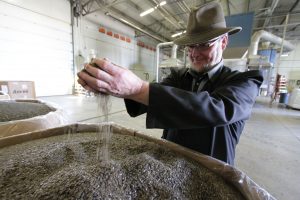
Crowfoot Plastics recycles 5 million pounds of plastic a year, such as those giant plastic wraps you see on farms and turns them into pellets that are then sold to make things like recycled garbage bags. The Green Acres Hutterite Colony powers this recycling operation with the largest solar farm in Western Canada. Photo David Dodge
Building a two-megawatt solar system is a little more ambitious than planting potatoes. It required an investment of $4.8 million. But after careful analysis the numbers seemed to add up nicely and the banks agreed.
“We did it for economic reasons,” says Dan Hofer. “They didn’t have an issue at all. After seeing some of the numbers, how the economics would work out, they were fully supportive.”
As for the environment, Dan Hofer says the clean nature of solar energy is gravy: “We’re all polluters of the land, so it’s good to give something back.”
For project developer SkyFire Energy, the project was a first in terms of scale.
“The solar resource here is some of the best in Canada,” says Vonesch. “A system installed right here will produce about 50 or 60 per cent more than if the same system were installed in Germany, where there’s more solar [installed] than anywhere in the world.”
The wind resource in Southern Alberta is also among the best in Canada. So why did the colony choose solar and not wind? “Maintenance was one of the big issues,” chuckles Jake Hofer. “And I’m terribly scared of heights.”
Making an investment for the future
Thanks to a keen business sense and a DIY attitude, Green Acres pushed the envelope on the cost of the solar. They secured an original quote to build their two-megawatt solar farm for $2.80 a watt, but reduced that to $2.40 a watt through their own labour.
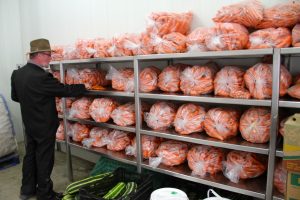
Dan Hofer hands me a carrot from the cool storage room on the Green Acres Hutterite Colony. These carrots are for colony use, but these are the same you might see at a farmers market in the region. Photo David Dodge
The result is a payback of 15 years if electricity prices remain low, or as few as 10 years if they start to escalate, says Dan Hofer.
It turns out I wasn’t the only solar tourist on this day. Intrigued by the economics, First Nations people from all over Alberta were also touring the solar farm and thinking about projects of their own.
“I think because of this system, because of Green Acres taking this leap, we’ve seen increased interest in these types of systems, and this scale of project,” says Vonesch. “It’s taken the ‘what’s possible’ to a new level, and lots of people are looking at it and following suit.”
“Ontario now has phased out coal, and has significant solar penetration,” he notes. As of late 2014, Ontario had installed 2,171 megawatts of solar and had 939 megawatts more under construction, way ahead of Alberta’s total of almost eight megawatts.
The rumour mill is alive with speculation about supportive renewable energy policies that may be coming from the new Alberta and federal governments.
“In the first half of this year in the U.S., solar was the largest new source of generation coming onto the grid, out-competing wind and natural gas,” says Vonesch. “It was the largest new source of energy in the U.S.”
Many are expecting Alberta and Canada to look to renewable energy to begin nibbling away at soaring greenhouse gas emissions.
